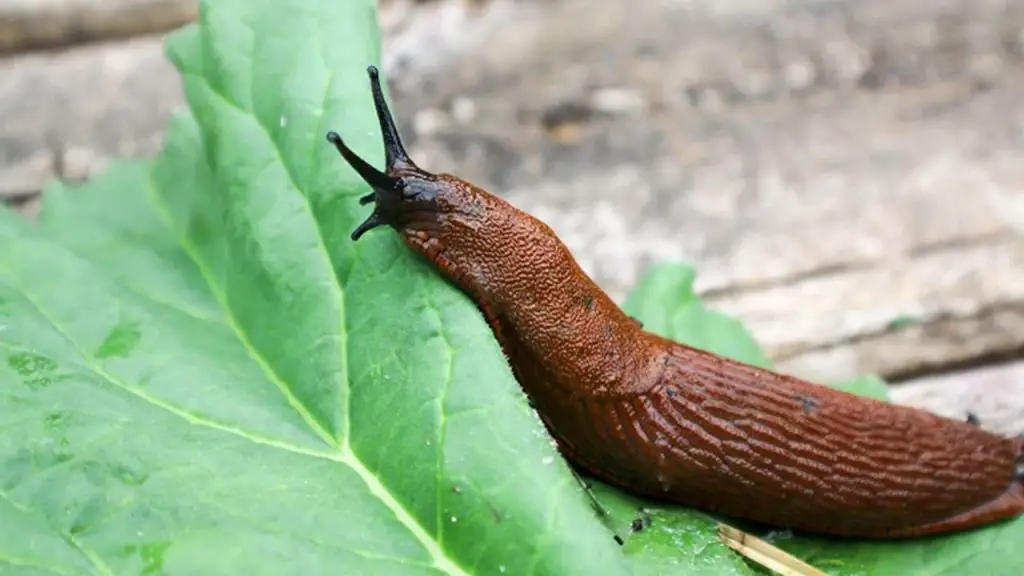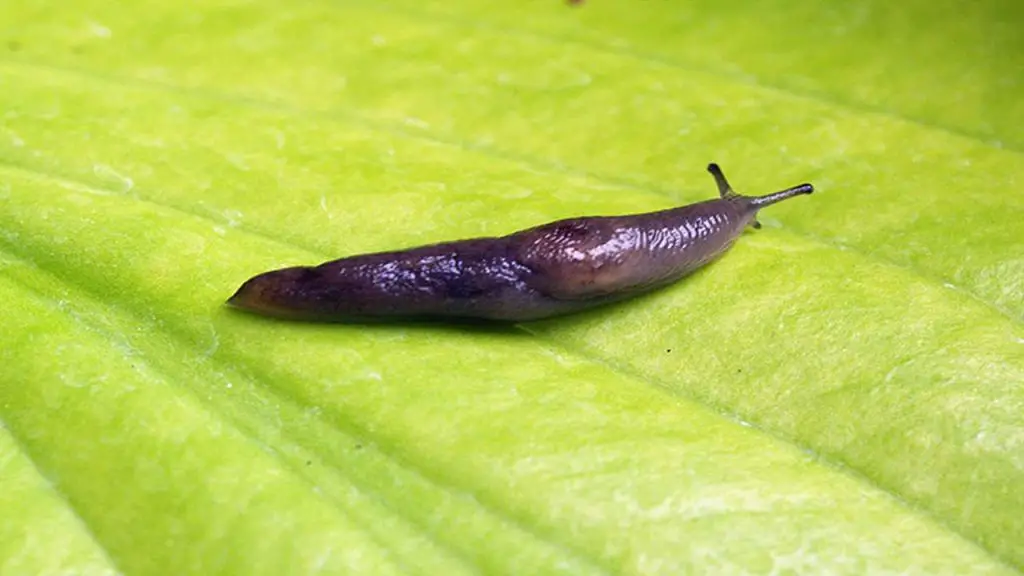As an Amazon Associate I earn from qualifying purchases.
Garden slugs are interesting creatures because they have both male and female parts.
When two slugs mate, they share sperm and each lays eggs, usually in the soil.
You can find them anywhere it’s damp, like in gardens, flower pots, or even in sinks! They’re slimy to touch because of the mucus that helps them move and stay moist.
They’re usually brown or grey and can grow up to four inches long. Garden slugs typically live for one to two years and are most active at night or when it’s rainy.
During the day, they hide in cool, damp spots like under rocks or mulch. They’re often seen as pests because they eat plants, which can cause big problems for gardens.
Gardeners might use chemicals to control them. Their love for munching on leaves can quickly damage a garden, but what exactly do they eat and how do they find their food?
We’ll explore these questions in our blog post “What do garden slugs eat,” along with insights into the eating habits of baby and giant garden slugs, and some interesting facts about them.
What do Garden Slugs Eat?

Garden slugs, mainly plant-eaters, enjoy a wide range of foods commonly found in gardens, yards, and natural areas.
They happily feast on leaves, flowers, and fruits like strawberries and apples, as well as vegetables such as lettuce, cabbage, and tomatoes.
Slugs also have a taste for herbs like basil and mint, often grown for cooking or medicinal purposes.
Young plants are especially at risk from their munching, which can slow down their growth.
Apart from eating plants, slugs play an important role in breaking down dead plant material and even dead animals, helping to recycle nutrients in the soil.
Some types of slugs even enjoy munching on fungi, including mushrooms.
However, their big appetites can cause headaches for gardeners and farmers, so it’s important to find effective ways to manage them and protect crops and decorative plants from damage.
What do Baby Garden Slugs Eat: Diet of Baby Garden Slugs
Baby garden slugs, or neonates, eat somewhat similar but slightly different foods compared to adult slugs.
While adults can munch on a wide range of stuff, babies prefer softer, easier-to-digest meals.
Their go-to foods are algae and fungus, which are soft and packed with nutrients for their fast growth.
As they get bigger, they start nibbling on plants found in gardens and nature, like veggies, herbs, flowers, and wild plants.
Since they’re tiny when they’re born, they need lots of nutrients to grow quickly, so they’re always searching for plant snacks.
Sometimes they’ll even eat decaying leaves or leftover eggs from their clutch to boost their shell’s calcium.
Even though they can eat some soft plant parts, they usually steer clear of tougher leaves and stems.
They tend to stick close to where they were born, snacking on algae and fungus until they’re a bit bigger and stronger.
Their tastes might change as they grow up, but when they’re babies, they mostly eat the same stuff as adult slugs.
What do Giant Garden Slugs Eat?
Giant garden slugs, much like their smaller counterparts, primarily feast on plants, but their larger size means they eat even more, causing significant damage.
These enormous slugs have a wide-ranging diet, happily munching on leaves from various plants, including vegetables, ornamentals, and wild species.
They can handle thick stems and tough foliage, damaging crops and ornamental plants.
They also enjoy ripe fruits and vegetables like tomatoes, cucumbers, and squash, as well as herbs like basil and mint, and many types of flowers.
Young plants, especially seedlings, are particularly at risk, hindering their growth.
Gardeners and farmers face a big challenge controlling these voracious eaters, needing effective measures to protect their crops and maintain garden ecosystems.
How do Garden Slugs Find Its Food?
Garden slugs use their senses to find food. They don’t see very well and can only tell if it’s light or dark. So, they rely a lot on their sense of smell to sniff out nearby plants to eat.
They also have special parts on their tentacles that help them taste things to see if they’re good to eat.
Once they find something tasty, they use their mouthparts to eat it. The slime they leave behind helps them find their way back to food later on.
Some studies even suggest that slugs might remember where they found food before and go back there.
Overall, garden slugs depend on their sense of smell and taste, along with their ability to detect certain chemicals, to find and eat their favorite foods in their surroundings.
Where do Garden Slugs Live?
Garden slugs like to live in wet and moist places because they need that kind of environment to stay healthy.
You can find them in lots of different places like gardens, yards, forests, farms, and even in cities.
During the day, they hide under rocks, logs, or in mulch to stay away from the hot sun, which can dry them out.
These hiding spots also keep them safe from animals that might want to eat them. But at night, when it’s cooler and more humid, they come out to look for food.
They like gardens because there’s lots of water in the soil and plenty of plants to eat. So, you’ll often see them there.
Garden slugs can live in many places, but they prefer damp areas with lots of plants around.

Interesting Facts About The Garden Slugs
1. Slippery Defense: Slime might seem gross, but it’s a handy defense for garden slugs.
They make a thick, sticky mucus that helps them slide smoothly over surfaces and keeps them safe from predators like birds and small animals.
2. Plant Preferences: While garden slugs generally eat plants, some types have specific tastes.
For instance, the Spanish slug loves strawberries, causing trouble in gardens and strawberry fields.
3. Self-Reproduction: Garden slugs are special because they’re hermaphrodites, meaning they have both male and female parts.
This lets them reproduce on their own, though they still prefer to mate with other slugs if they can.
4. Night Owls: Most garden slugs come out at night when it’s cooler and more humid. This helps them stay hydrated and avoid predators that are more active during the day.
5. Surprisingly Long Lives: Despite being small, garden slugs can live for quite a while, with some species lasting for several years in the right conditions.
6. Environmental Indicators: Garden slugs are sensitive to changes in their environment, which makes them useful for telling us about the health of an ecosystem.
Their presence or absence can tell us a lot about things like soil moisture and overall ecosystem balance.
7. Impressive Healing: Slugs are pretty good at fixing themselves up. If they lose a body part, like a tentacle, they can grow it back!
8. Nature’s Recyclers: Even though they can be pests in gardens, slugs play an important role in nature as decomposers.
By eating decaying plants and other organic stuff, they help recycle nutrients back into the soil, which keeps it healthy.
These neat facts help us understand how garden slugs fit into the world around us, both in nature and in our gardens.
Conclusion
In summary, while garden slugs might bother gardeners, they’re quite interesting creatures with special diets and ways of living.
Learning about what they like and how they behave can help lessen their effects on gardens and make us appreciate nature more.
So, next time you see a garden slug, take a moment to think about how amazing it is—and maybe try some eco-friendly ways to deal with it in your garden.
FAQ’s:
Garden slugs mainly eat plants. They like to munch on things like leaves, fruits, vegetables, and flowers.
They’ll eat pretty much any plant they can find in your garden.
It depends on how much damage they’re causing. If you notice slugs eating your plants and causing harm, you might want to remove them from your garden.
However, there are ways to do this without necessarily killing them, like using traps or barriers.
Slugs don’t like dry or rough surfaces. They also don’t like certain strong-smelling substances, like garlic or copper.
You can use these things to create barriers to keep slugs away from your plants.
The lifespan of a slug can vary depending on the species and environmental factors.
Some slugs might only live for a year or so, while others can live for several years if conditions are right.
There are a few methods to control slugs in the garden. You can use natural predators like birds or frogs, or you can try using slug pellets or traps.
Some people also use barriers or repellents made from materials like copper or certain plants to keep slugs away from their plants.
Amazon and the Amazon logo are trademarks of Amazon.com, Inc, or its affiliates.

